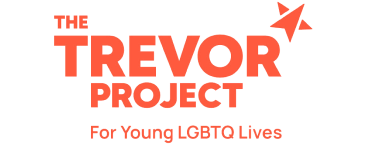Our People

At Asana, we constantly strive to engage and support our people so they can work with clarity and purpose — because in order for our employees to do their best work and for us to achieve our mission, everyone at Asana must feel respected and valued.
Throughout FY23, we:
Launched psychological safety workshops led by our Diversity, Inclusion & Belonging team to enable effective and high performing teams.
Piloted a leadership development program to cultivate our leaders as champions of inclusion and equity.
Continued regular fireside-chat style all hands to give employees more opportunities to directly ask questions and engage with senior leaders.
Introduced our new conscious leadership curriculum, including a special Leading Consciously through Change training designed specifically to enable managers to support their teams through organizational changes.
Alignment across the workforce
Our people are the heart of Asana. That’s why we believe that our employees need clarity about not just their individual role, but also how that role fits in with companywide objectives.
Onboarding
Our onboarding process is carefully designed to give new employees the tools they need to succeed at their jobs and feel a sense of belonging in Asana’s culture. Deep-dive educational sessions introduce new hires to the values that define our culture and our approach to co-creation.
In FY23, 98% of new hires who completed our six-week onboarding survey reported they have a clear understanding of our values, 97% say their manager has made them feel valued, and 96% agree that Asana’s commitment to our mission is genuine.
Performance management
In FY23, our Growth and Impact process involved two formal annual performance reviews, with continuous two-way conversations between employees and managers to discuss positive impact on customers, employees, and the company at large, and then assessing how to grow that impact.
In FY24, we are elevating our approach and moving to a single annual review process with additional quarterly feedback opportunities between employees and their managers.
In FY23, 98% of employees completed their Growth and Impact review.
Training and skills development
-
New employee onboarding
Structured in-person and online learning to ensure new Asanas are thriving and productive during the first six months in their role.
-
Career growth budget
An individual learning budget of $600 a year for Asanas to spend on external classes, certifications, books, subscriptions, or anything else they need to build their skills.
-
Development plans
Customized career development plans created by Asanas, in partnership with their managers and supported by the People Development team.
-
Manager enablement program
Formal support for managers to ensure they are equipped to lead high-performing, inclusive teams.
-
Conscious leadership development
A leadership training program available to all Asanas and focused on self-awareness, responsibility to the community, and team centricity.
-
Talent review
A process for evaluating the performance and potential of our team members.
-
Anytime feedback
An always-on culture of growth, supported by technology that Asanas use to offer each other feedback year-round.

Investing in our employees’ health and well-being
Health and wellness benefits are not just a tool for attracting and retaining talent—more importantly, they are a sound investment in the total health of our people, which enables us to do our best work.
Medical benefits
Where applicable, we offer 100% employer-paid medical benefits for employees. Some highlights include:
- Employees and their family members can access eight free therapy sessions and eight free personal/professional coaching sessions every year.
- Inclusive fertility-health and family-forming benefits. This includes support for fertility health, assisted reproduction, preservation, adoption, and gestational carrier arrangements. It also includes a $10,000 lifetime reimbursement for the costs of their family-forming journeys.

LiveWell
Our LiveWell program includes a culinary program focused on healthy foods, ongoing nutrition education, and fitness support.
We offer free gym access or monthly gym membership reimbursement to employees in most regions.
Work-life balance

Flexible paid time off
We believe rest at every level is critical to optimizing performance. Our paid time off program facilitates employees and managers working together to plan for flexible recharge opportunities that balance both business and personal needs.

Minimum of 16 weeks of parental leave
Paid parental leave is offered to all new parents, regardless of gender. Globally, Asana employees also enjoy free access to Cleo, an online employee benefits platform offering a range of personalized guidance for families—from family planning and parenting to mental health and career coaching.

Sabbatical
After four years with Asana, employees are able to take a fully paid sabbatical of four weeks.

Other types of leave
We offer additional medical, family and civic leave based on local requirements and practices, including supporting employees during difficult times by offering generous bereavement leave that may also be used in the event of pregnancy loss.
Supporting diversity, inclusion, & belonging (DIB)
Our diverse workforce makes us a stronger company—better tuned to the needs of our diverse user base and better equipped to innovate. To truly unlock our potential as an organization and as individuals, we continue to infuse trust and respect built on inclusion and belonging into our culture.
Diversity, inclusion and belonging is a long-term commitment at Asana. Created in 2015, our dedicated Diversity, Inclusion, and Belonging function helps us cultivate belonging and trust which enables employees to thrive and do their best work in support of our mission.
In our continued efforts to be an anti-racist organization, we review our policies and programs that support diversity, equity, and inclusion through our Asana Acts Against Racism approach.
US employee demographics
US-based employees by ethnic/racial group4
Global gender demographics5,6
Managers
All Asana
Our efforts
Our Diversity, inclusion, and belonging work centers on three key elements:
Build
Build a strong foundation of support and resources for Asanas.
Recruit
Recruit and develop talent from historically marginalized and underrepresented groups and backgrounds.
Thrive
Create an environment that allows Asanas to thrive and do their best work.
Build
A strong foundation of support and resources helps our employees succeed in their work, serve a diverse customer base, and pursue Asana’s mission. We build that foundation with initiatives and programs that begin during the onboarding process and continue throughout their time with Asana.
Comprehensive diversity, inclusion, and belonging onboarding curriculum
To help new Asanas feel connected to their teams and to the company as a whole, we’ve integrated a diversity, inclusion, and belonging curriculum into our onboarding process. From the beginning, new employees learn about our approach to diversity, inclusion, and belonging and the role each one of them plays in building a more inclusive culture at Asana.
Ongoing training and education
Seminars, workshops, and educational programs underscore the company’s commitment to diversity, inclusion, and belonging and ensure that Asanas maintain an inclusive mindset. Our ongoing programs include:
- Mandatory anti-harassment training
- Bias awareness training
- Psychological Safety Workshops
- Inclusion Series: discussion on issues that build awareness and highlight opportunities for allyship.
For more information on our learning and development, see “Alignment across the workforce.”
Recruit
We want Asana’s workforce to be as diverse as the communities we work in and the customers we serve. Our goal is to identify, hire, and develop talent from underrepresented groups and backgrounds.
Targeted outreach
Representation is a core component of our talent attraction process. Our Talent Acquisition team leverages a portfolio of strategies including equitable sourcing, diversity events and partnerships, and emerging talent programs to reach candidates from historically marginalized communities and build equitable representation in our candidate pipeline.

The IDEAL policy
Our Inclusivity, Diversity, and Equity for Asana Leadership (IDEAL) policy requires that at least one candidate from an underrepresented ethnic group (in AMER) and at least one non-male candidate (global) is interviewed for every open people manager position.
Closing the opportunity gap
Asana helps expand tech opportunities for individuals from historically marginalized communities through a variety of programs:
Through our AsanaUP program, we partner with job training and career development programs including the Marcy Lab School and YearUP to offer apprenticeships to people entering tech from another field.
We also partner with organizations such as Techqueria, which empowers Latinx tech professionals to become leaders in the industry, and AfroTech, a networking platform, media outlet and annual conference that supports Black innovators and businesspeople.
Thrive
Asana cultivates a more inclusive environment where employees can thrive through a number of programs and initiatives designed to ensure equitable outcomes.
Employee resource groups
Our ERGs build community and actively support recruiting efforts and career development for historically marginalized communities. Since 2016, Asana has launched seven ERGs that have become a foundational part of our culture.
-
Asanapac
Celebrates and empowers Asana’s Pan Asian and Pacific Islander (PAPI) communities by providing a platform for support, connection, and career and personal development.
-
AsanaWomen
Provides a platform to celebrate and support the work of women in tech.
-
AsanaWomen EMEA
Empowers and connects women across our Europe, Middle East, and Africa (EMEA) region.
-
Blacsana
Aims to empower and connect Asana’s Black employees and provide a safe community that supports their development, celebrates their successes, and leverages their knowledge in support of Asana’s mission.
-
Gradient
Honors and celebrates multicultural and intersectional identities among Asana’s employees.
-
Raíz
Uplifts Asana’s Latinx/e and Hispanic employees with a sense of belonging and opportunities for growth.
-
Team Rainbow
Supports Asana’s LGBTQIA+ community, providing a safe space for employees and their allies to support and learn from each other.

Membership in our ERGs inspires our colleagues to show up personally, show up professionally, and take risks. In Blacsana, we’re always asking ourselves, ‘How can we meet the moment where the company is today?’

Jasmine Braxton
Commercial Counsel and Blacsana co-lead
Complementing our ERGs, Asana also has several employee-driven communities in which Asanas with shared identities, experiences, or interests offer each other community and support. These include:
- Asanable, a community for Asanas with disabilities and their allies
- Gigabyte, a community for women, transgender, and gender non-conforming (WTGNC) Asanas in technical roles
- Parents and Caregivers, a community for Asanas for Asanas with children
- Thrive, a community for Asanas and allies focused on mental health
Pay equity
Thriving also requires ensuring employees are paid fairly for the impact they have, and that they understand the steps we take to minimize bias in the pay process. We take a highly disciplined approach to compensation management, with defined pay bands for each role,formalized guidance on new hire packages, merit increases, and refresh rewards, and a thorough calibration and review process. In FY23, we published our salary ranges to all employees globally, and we now include these ranges in our external job postings.
To monitor our results, we partner with a third party to analyze our global pay data by gender identity and our U.S. pay data by race/ethnicity twice a year. We report the findings to leaders and employees at Asana, including our ERGs. If we identify statistically significant gaps, we draw from a dedicated budget to close them and investigate the root cause of the difference.

Customer case study
The Trevor Project
The Trevor Project is the world’s largest suicide prevention and mental health organization for LGBTQ young people, providing free and confidential phone, chat, and text counseling, as well as a safe social network called TrevorSpace. Trevor’s award-winning team operates innovative research, education, and advocacy programs to address the public health crisis of LGBTQ youth suicide, and has partnered with celebrities like Lil Nas X and Janelle Monae to build awareness of its services and send messages of love and support for LGBTQ young people so they feel safe and empowered.
Results:
- Saved 348 workdays per year. Reallocated time across their teams previously spent managing work to more impactful projects via automation, centralized communication, forms for work intake, and more.
- Launched project management standards. Established standard yet flexible ways of working through templates and clear processes to improve accountability, increase operating efficiency, and speed up onboarding.
- United a growing national organization. Created transparency and enabled collaboration across teams in Asana, supported by integrations with tools like Slack, Jira, Google Workspace, and Okta.
4 Self-reported data as of January 31, 2023. Respondents could choose more than one race/ethnicity.
5 Self-reported data as of January 31, 2023. Excludes countries that do not allow for data to be collected on gender.
6 GNC designation includes the categories of agender, gender non-conforming, genderqueer, transgender, and non-binary.




